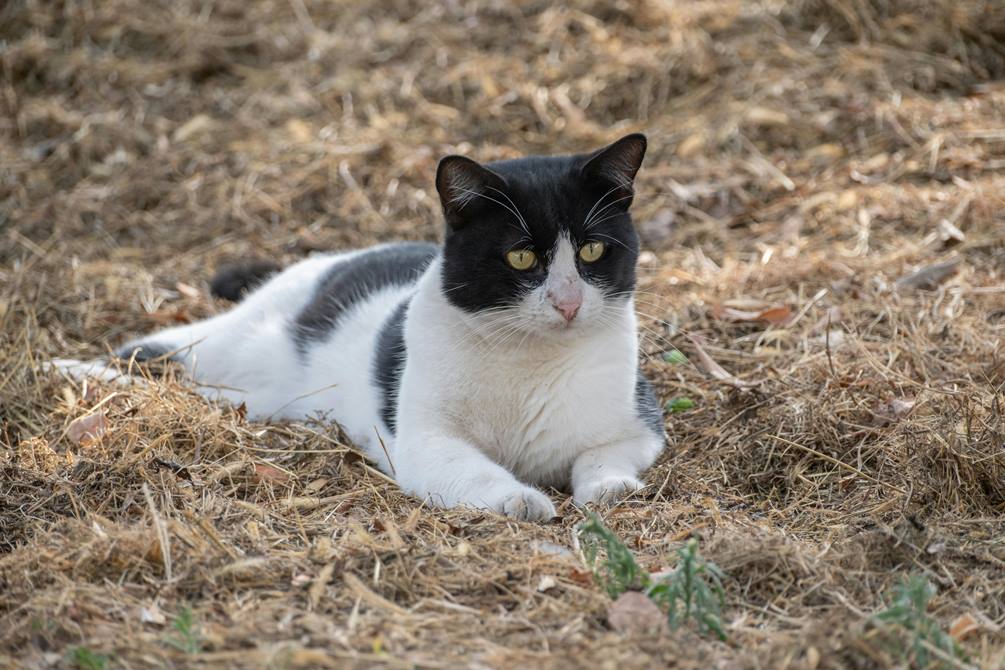In this Article
Cats are known for their vocal nature, using meows, purrs, and yowls to communicate with humans and other animals. While some vocalization is normal, excessive meowing can be disruptive and stressful for both the cat and its owner. Understanding why cats meow excessively and implementing effective strategies to manage it is key to maintaining a harmonious relationship with your feline companion. This article explores the reasons for constant vocalization, supported by facts and figures, and offers practical solutions for a quieter, happier home.
Why do cats meow?
Meowing is primarily a form of communication directed at humans. Unlike other vocalizations, such as hissing or growling, which are often used with other cats, meowing is a cat's way of expressing needs, emotions, or desires to its human caregivers. According to a 2015 study published in the Journal of Veterinary Behavior, domestic cats meow more frequently than feral cats, suggesting that the behavior evolved to interact with humans.
Cats may meow for a variety of reasons, including
-
Hunger or thirst: A 2020 survey by the American Pet Products Association found that 62% of cat owners reported increased meowing when their cats were hungry or their food bowls were empty.
-
Attention-seeking: Cats are social creatures, and a 2019 study in Applied Animal Behavior Science found that domestic cats seek human interaction, with vocalization being a primary tool.
-
Stress or anxiety: Environmental changes, such as moving or introducing a new pet, can trigger excessive vocalization. The ASPCA reports that 15% of cats exhibit stress-related behaviors, including meowing.
-
Medical issues: Pain, hyperthyroidism, or cognitive dysfunction in older cats can lead to increased vocalization. A 2017 study in the Journal of Feline Medicine and Surgery found that 20% of senior cats over 12 years old showed signs of cognitive dysfunction, often accompanied by excessive meowing.
-
Breeding Instincts: Unaltered or unneutered cats may meow loudly to attract mates. The Humane Society estimates that spaying or neutering reduces hormone-induced vocalization by up to 90%.
-
Boredom or lack of stimulation: Cats need mental and physical engagement. A 2021 report by the Pet Food Manufacturers' Association found that 30% of indoor cats exhibit behaviors such as excessive meowing due to lack of enrichment.
Understanding the root cause of your cat's meowing is the first step in addressing it. Let's take a closer look at these triggers and explore solutions.
Common causes of excessive meowing
1. Hunger or feeding problems
Cats are creatures of habit, and disrupting their feeding schedule can lead to vocal protests. A 2018 study in the Veterinary Record found that cats fed on a consistent schedule meowed 40% less than those with irregular feeding times. In addition, some cats may meow excessively if they dislike their food or if their diet lacks essential nutrients.
Solution:
- Establish a routine: Feed your cat at the same time each day. Most adult cats require 2 to 3 meals a day, depending on their weight and activity level.
- Check food quality: Make sure the food meets the nutritional standards set by the Association of American Feed Control Officials (AAFCO). Consult your veterinarian if you suspect nutritional problems.
- Automatic Feeders: For busy owners, automatic feeders can maintain consistency and reduce hunger-related meowing. A 2022 Pet Tech survey reported that 25% of cat owners using automatic feeders noticed a decrease in vocalization.
2. Attention-seeking behavior
Cats often meow to get attention, whether it be for play, petting, or simply to engage with their owners. While this is normal, reinforcing the behavior by responding each time can create a cycle of excessive vocalization. The Journal of Veterinary Behavior (2020) found that cats trained to expect attention after a meow vocalized 50% more than cats taught alternative behaviors.
Solution:
- Positive Reinforcement: Reward quiet behavior with treats, petting, or play. Ignore excessive meowing unless it signals a real need.
- Interactive play: Spend 15-20 minutes a day playing with toys such as feather wands or laser pointers. A 2023 study by the University of California, Davis, showed that regular play reduced attention-seeking behavior in 70% of cats.
- Enrichment: Provide scratching posts, jungle gyms, or puzzle feeders to keep your cat occupied. Enrichment can reduce attention-seeking meowing by up to 35%, according to a 2021 study in Animals.
3. Stress or anxiety
Cats are sensitive to changes in their environment. The introduction of a new pet, loud noises, or even rearranged furniture can trigger stress-induced meowing. The American Veterinary Medical Association (AVMA) estimates that 10-15% of cats experience anxiety-related behavior each year.
Solution:
- Create a safe space: Provide a quiet area with a bed, toys, and hiding places where your cat can retreat. A 2019 study in the Veterinary Nursing Journal found that safe spaces reduced stress behaviors in 60% of cats.
- Pheromone diffusers: Products such as Feliway mimic calming cat pheromones and reduce anxiety in 80% of cats, according to a 2020 study in the Journal of Feline Medicine and Surgery.
- Gradual introductions: When introducing new pets or changes, do so slowly to minimize stress. The ASPCA recommends a 7-14 day adjustment period for most cats.
4. Medical Concerns
Excessive meowing can be a symptom of underlying health problems, especially in older cats. Hyperthyroidism, which affects 10% of cats over 10 years old (according to a 2016 Journal of Veterinary Internal Medicine study), often causes increased vocalization, appetite, and restlessness. Dental pain, arthritis, or urinary tract infections can also cause meowing.
Solution:
- Veterinary Checkup: Schedule a vet visit if the meowing is sudden, persistent, or accompanied by other symptoms such as weight loss or lethargy. Blood tests can diagnose conditions such as hyperthyroidism with 95% accuracy.
- Pain management: If pain is the cause, your veterinarian may prescribe medication or recommend dietary changes. A 2022 study found that pain relief reduced vocalization in 85% of affected cats.
- Cognitive dysfunction: For older cats, environmental enrichment and supplements such as omega-3 fatty acids can help. A 2018 study showed that a cognitive support diet improved behavior in 50% of cats with dysfunction.
5. Hormonal Behavior
Unaltered females in heat or unaltered males seeking mates may produce loud, persistent vocalizations. The Humane Society notes that 80% of unneutered females exhibit intense meowing during estrous cycles, which occur every 2-3 weeks.
Solution:
- Spay or neuter: These procedures eliminate hormone-induced meowing in 90% of cases, according to a 2021 veterinary report. They also reduce health risks such as mammary cancer.
- Consult a veterinarian: If spaying or neutering isn't an option, discuss alternatives such as hormone treatments, although these are less common.
6. Boredom and lack of stimulation
Indoor cats, which make up 70% of pet cats in the U.S. (according to the AVMA), are prone to boredom without adequate stimulation. This can manifest as excessive meowing, especially at night.
Solution:
- Environmental enrichment: Provide toys, window perches, and interactive feeders. A 2023 study in Applied Animal Behavior Science found that enriched environments reduced nighttime vocalizations by 45%.
- Exercise: Engage your cat in physical activity to burn energy. The AVMA recommends at least 20 minutes of active play each day.
- Rotate toys: Introduce new toys weekly to maintain interest. A 2020 survey showed that 65% of cats respond positively to toy variety.
General strategies for calming a noisy cat
In addition to addressing specific causes, several general strategies can help manage excessive meowing:
-
Training and behavior modification: Use positive reinforcement to encourage quiet behavior. For example, reward your cat with a treat when she stops meowing after a command like "quiet. A 2019 study found that consistent training reduced vocalization in 75 percent of cats within two weeks.
-
Nighttime management: Nighttime meowing is common, especially in active breeds like Siamese, which account for 15% of vocalization complaints (according to a 2022 pet behavior survey). Feed your cat a small meal before bed, dim the lights, and provide a comfortable sleeping area to encourage rest.
-
Monitor breed tendencies: Some breeds, such as Siamese, Bengals, and Orientals, are naturally vocal. A 2021 study of breed behavior found that Siamese cats meow 30% more than average. Understanding your cat's breed can help you set realistic expectations.
-
Track Patterns: Keep a log of when and why your cat meows. This can help you identify triggers, such as specific times or events, and tailor solutions accordingly.
When to seek professional help
If meowing continues despite your best efforts, consult a veterinarian or feline behaviorist. The AVMA estimates that 5-10% of cases of excessive vocalization require professional intervention, often due to complex medical or behavioral issues. Certified behaviorists, such as those accredited by the International Association of Animal Behavior Consultants, can develop individualized plans with an 80% success rate in resolving chronic cases.
Conclusion
Excessive meowing can be challenging, but it's often a sign that your cat is trying to communicate something important. By identifying the cause-whether it's hunger, stress, medical issues, or boredom-and applying targeted solutions, you can reduce vocalization and strengthen your bond with your pet. With patience, consistency, and the right strategies, you'll create a quieter, more peaceful home for you and your feline friend. For ongoing concerns, don't hesitate to seek veterinary or behavioral expertise to ensure your cat's health and happiness..

